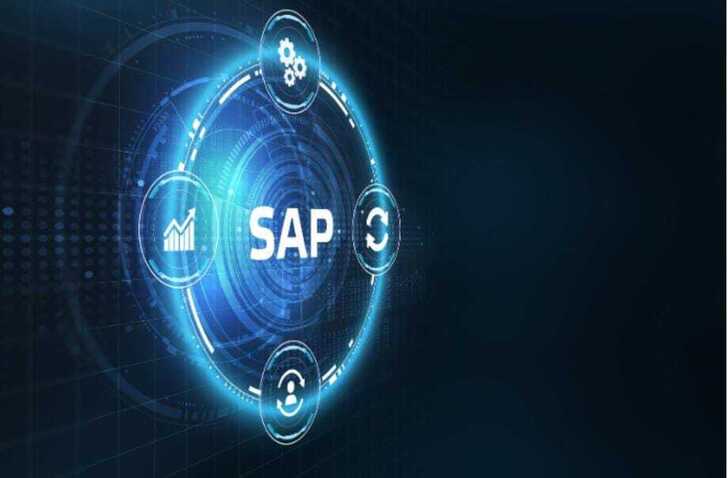SAP ERP is Enterprise Resource Planning (ERP) software developed by SAP SE. Enterprise resource planning, or ERP software, is modular software that aims to unify a company's fundamental business operations by integrating their key tasks.
Finance and accounting, human resources, manufacturing, materials management, and customer relationship management are just a few of the critical business functions that ERP modules address. Organisations only employ the modules that are necessary for them to keep their operations running smoothly. But What is SAP? Why is it so popular, and can you learn about SAP's key components and modules with the SAP Course? We will answer all these questions in this blog, so keep reading!
Table of Contents
- What is SAP?
- Key SAP Modules
- SAP FI (Financial Accounting) Module
- SAP CO (Controlling) Module
- SAP HR (Human Resource) Module
- SAP SRM (Supplier Relationship Management) Module
- SAP CRM (Customer Relationship Management) Module
- Conclusion
What is SAP?
SAP AG, situated in Walldorf, Germany, provides an ERP system known as Systems, Applications, and Products (SAP). SAP was founded by former IBM engineers in 1972, and since then, it has grown into a worldwide company and a market leader in the ERP software industry.
SAP ERP's many tools and modules enable clients to accomplish daily business tasks such as accounting, sales, production, human resources, and finance. The data from these numerous modules is kept in a centralised database in an integrated environment, allowing information and data to flow from one SAP component to the next while eliminating the need for redundant data entry.
SAP modules are divided into functional and technical modules. SAP's Functional Modules provide capabilities such as human resource management, financial management, production planning, and other work activities that help the organisation run smoothly on a daily basis. SAP's technical modules are designed to ensure that operations run smoothly throughout the SAP ecosystem. Let us look at the main technological modules and how they are used.
Key SAP Modules
Here are some of the key SAP modules:
SAP FI (Financial Accounting) Module
The SAP FI (financial accounting) module is meant to track the flow of money in an organisation in a regulated manner while also integrating all financial information for effective and strategic decision-making. This module is incredibly adaptable and works well in any economic condition, small or huge.
The implementation of this module aids in the aggregation of data for various commercial transactions and legal obligations. SAP FI may be used with other SAP modules such as SAP SD, SAP MM, SAP PP, Payroll, and others to improve work performance.
SAP CO (Controlling) Module
The SAP CO (Controlling) module supports and aids in the planning, coordination, reporting, monitoring, and optimisation of processes within an organisation. It helps managers and decision-makers understand where their company's money is being spent. CO assists them in optimising company costs.
SAP CO modules include maintaining and setting master data for cost centres, profit internal orders, functional areas, and so forth. SAP CO also supports studying actual numbers and anticipated data and helps in developing further business plans.
SAP Human Resource (HR) Module
SAP HR is also called the SAP HCM (Human Capital Management) module. This SAP Module optimises the HR department's work processes and data management. SAP HCM includes sub-modules such as Personnel Administration (PA), Organisational administration (OM), Time, and Payroll, which aid in staff administration.
The primary goal of the SAP HR module is to manage employee-related data for administrative, time-keeping, and payment purposes. Sub-modules are important functional areas within the SAP HCM Module. The HR system contains failsafe integration points. This is done with no human interference. In addition, the HR sub-modules are tightly integrated.
SAP SRM (Supplier Relationship Management) Module
As the name implies, the SRM Module is concerned with the effective and efficient flow of products and services between an organisation and its suppliers. This section's major focus is on product acquisition, which includes direct materials, indirect materials, and services. This module can easily interact with the planning, accounting, and inventory systems.
The primary process addressed in this module is the purchase of items such as direct materials, indirect materials, and services. This module seamlessly connects with the planning, accounting, and inventory systems.
SAP CRM (Customer Relationship Management) Module
SAP CRM manages all customer-related procedures from beginning to end. CRM Modules are meant to combine data about all of an organisation's clients in one location.
It focuses on managing customer relationships by combining data and automating sales, marketing, and service operations. It allows organisations to improve customer happiness, loyalty, and retention by providing efficient communication and tailored services.
This is not an exhaustive list of SAP modules; there are a lot more modules that help other aspects of business, including product management, production, supply chain management and more.
Conclusion
SAP is a leading global ERP software, and it is widely used in most large companies. The ability to use SAP ERP in a modular manner makes it so popular. Based on the requirement, a company can use the required modules to save money and resources and streamline the complete business process. There are a lot more modules that help businesses in general, while there are also some modules that are very specific or niche to a particular industry, like SAP RE and SAP AFS. To understand SAP, it is necessary to understand its various modules, and we hope that this blog has given you a basic understanding of various modules in SAP.
Source: Story.KISSPR.com
Release ID: 859973

